Work I have been looking at that influence my making
Omani Pavillion: Radhika Khimji
I was not able to visit the Biennale and was made aware of this work by a fellow student of the OCA EU group who visited the Bienalle and shared images. The Omani exhibition, titled ‘Destined Imaginaries’, brings together five Omani artists across three generations: Anwar Sonya, Hassan Meer, Budoor Al Riyami, Radhika Khimji and Raiya Al Rawahi, whose work here presents abstract habitats of future relics largely inspired by their experiences of the Covid pandemic, and offers a snapshot of the country’s vibrant creative landscape. Having lived in Dubai until recently I have an interest in the landscape and art culture.
Concluding the exhibition is a site-specific work by Radhika Khimji, incorporating textiles, sculptures and walls, all based on the Al Hoota Caves. This two-million-year-old cave system in Dakhiliyah, Oman is home to a rare species of fish that have adapted to the lack of natural light and thus lost their ability to see. Khimji imagines these fish emerging from the caves and contemplating their agency: ‘It’s about how we respond to our environments, and whether our environments define us,’ Radhika’s work comes back to national identity, and so it was important to have her voice to show the diversity of Oman, which is such a multicultural society.’
I became very interested in the work of Radhika Khimji.
The works below intrigued me with the cut-out work and how it reminded me of work I started and considered developing into a bigger work. I enjoy the process and layering or use of reflective methods I see in her work. It also works as an exploration of the repetition of form, which I use in my own making/understanding .

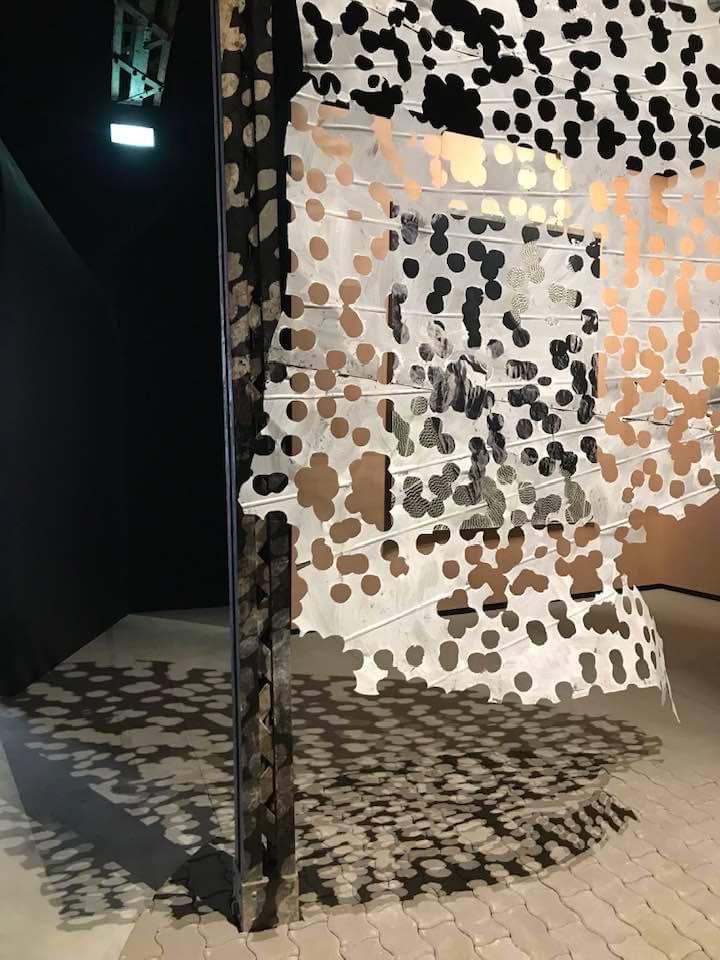
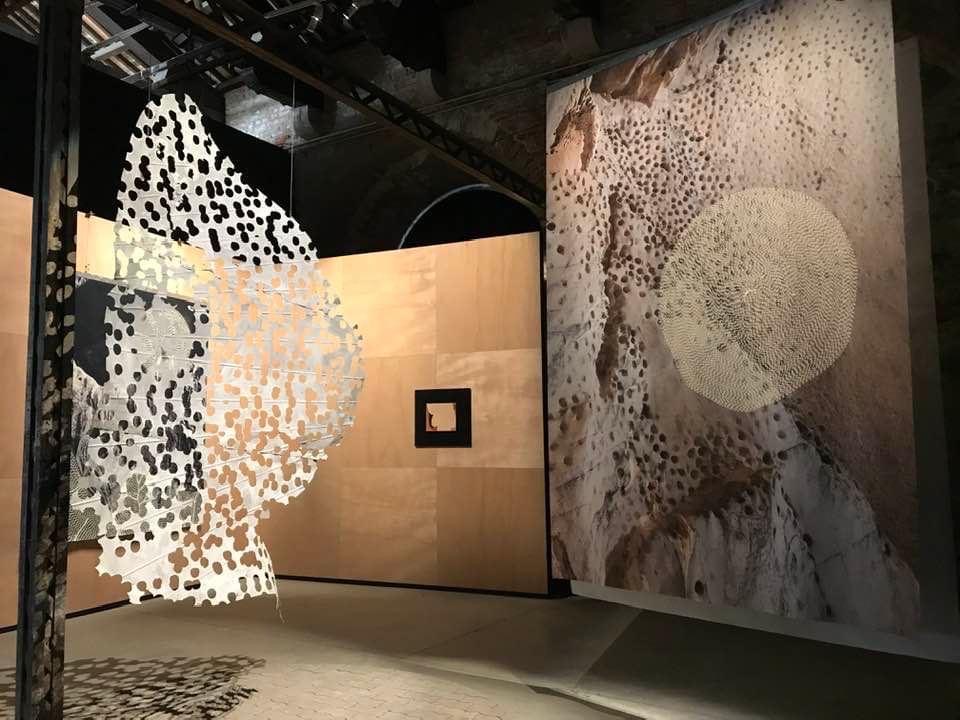
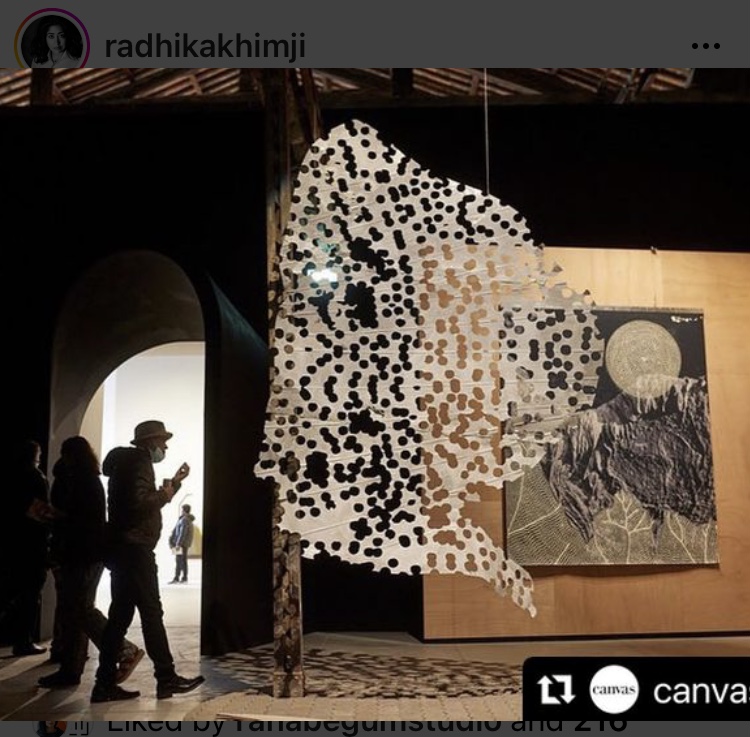
My own work was small and I have been considering making a bigger work with cut-out round shapes.
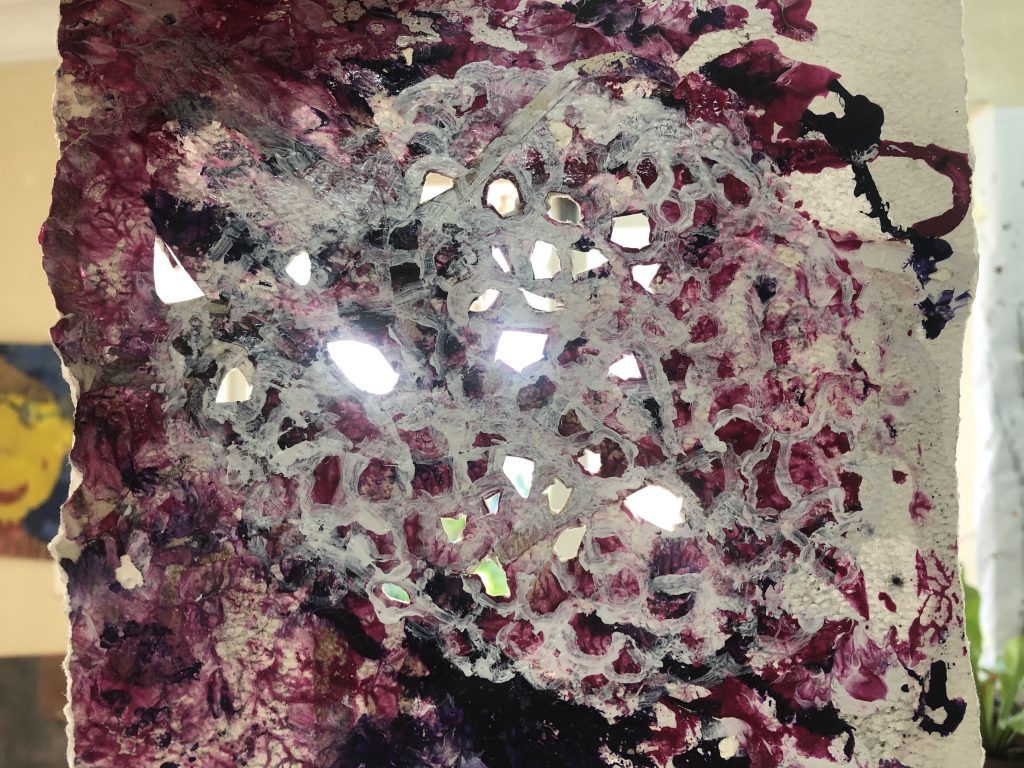
Later I read that she is informed by the physicality and materiality of the making process to deconstruct. She also looks to evade and erase constructions of formulated identities. She questions categorisation and often plays with terms and the naming of things to generate a new narrative for an object and render it abstract from its loaded history. I find more info on the work that intrigued me. Seems she made earlier works which are very similar. Below is The Dangler, made in 2008 . It is done on aluminium with acrylic and measures 300 x 200cm
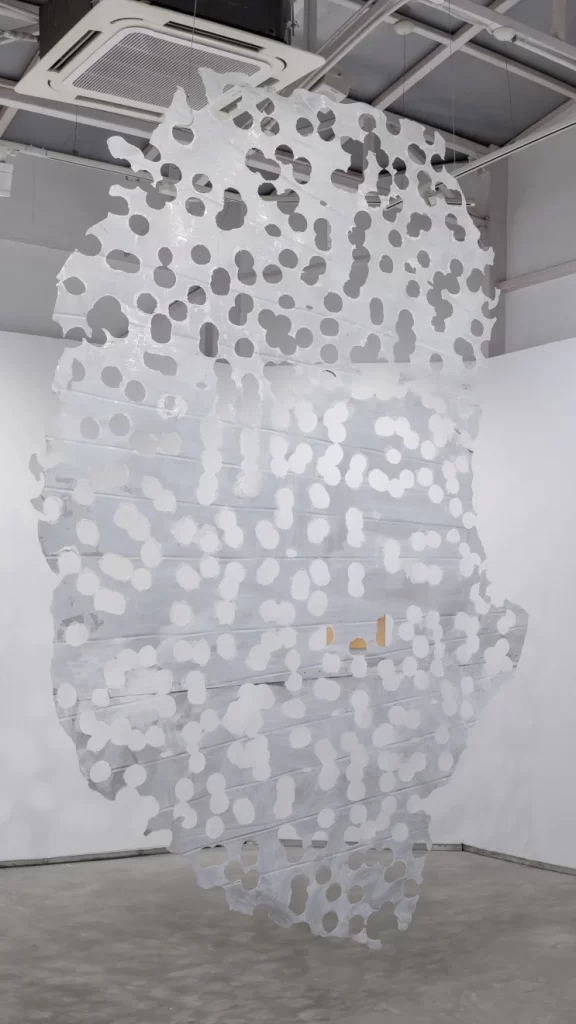
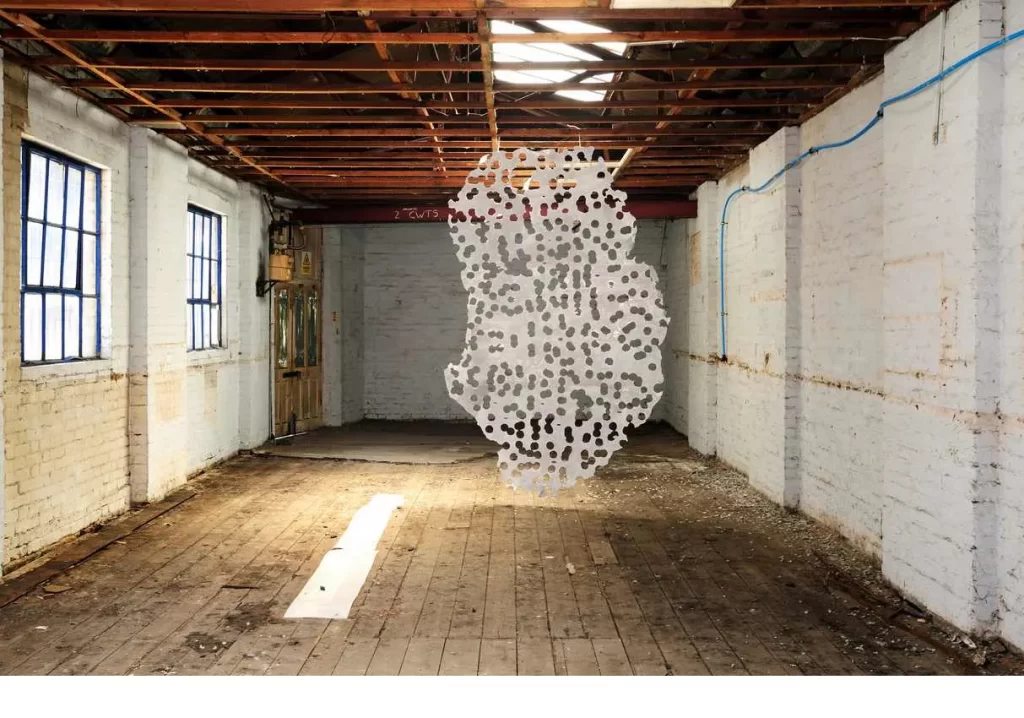
The formal pursuit to elude and subvert the diminishments of discrete identifications illicit a work of perpetual displacements.
My exploration into other materials also motivated my making of the layered works. Shapes of the fungi influence the form I would like to represent as well as material choices. In the exploration below, I used a tool on one of my made canvasses and burnt holes into the fabric. This led to more explorations. I could work with thin and fragile materials but also wanted to explore steel or aluminium.
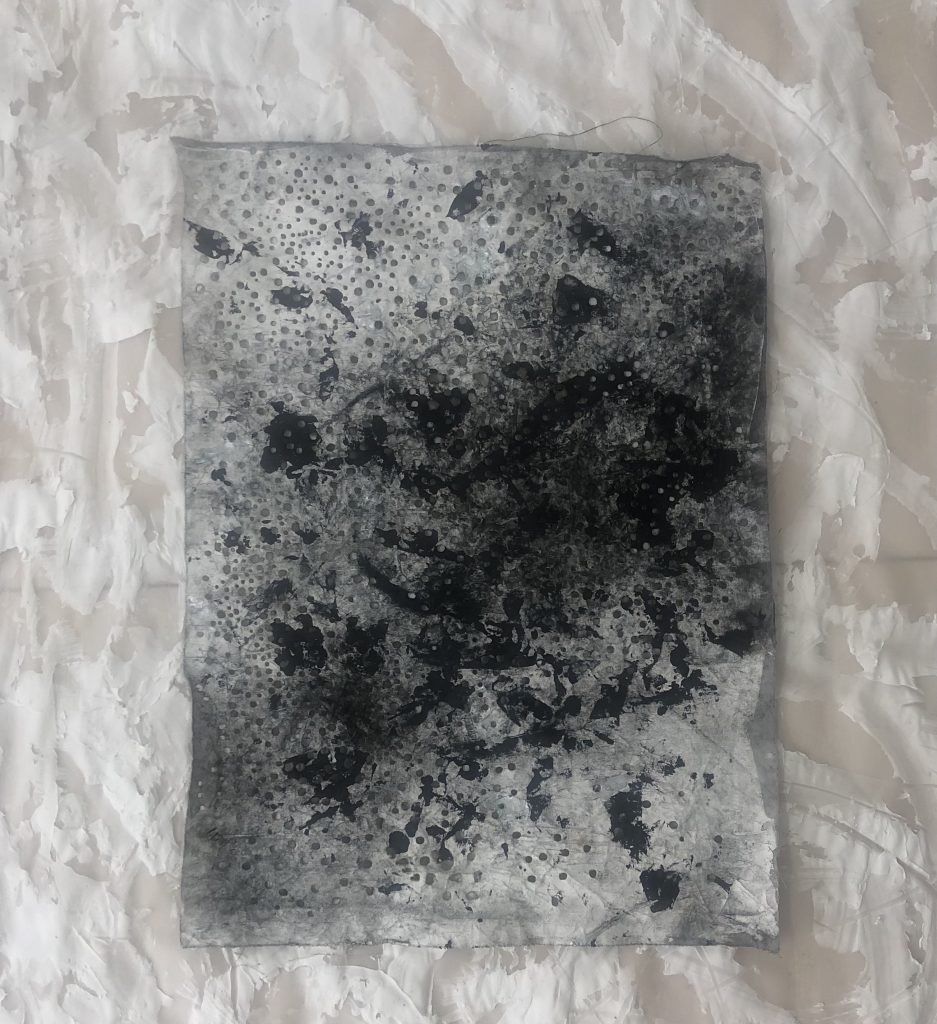
My making was influenced as I was looking to make and or develop resolved pieces. I discuss this process in my Parallel Project, Part Four of this project in the blog called xxxxxxxxxx the heading, Painting and Drawing with different materials. During that time I attended a workshop session with OCA Tutor, Cheryl Huntbach around Drawing through Repetition and Iteration, where I became more focussed on the intent of my work – for me it became about the veiled form and the use of it as an extension of layering/covering/ adding meaning or just to conceal or view shape of a thing or idea. By using drawing materials like soft charcoal, my fingers and an eraser I felt I connected to the thinking in the process. It reminded me of mycelium and the shape of the veiled mushroom. Materials I thought of were textured and fragile, like net, sheer fabrics, knitting, crocheting, weaving…..I felt I was getting closer to the idea of Engtanglement and used text to also stay focussed around pushing the making and looking for resolved outcomes.
I went back to the shape of the veiled mushroom and explored the form in different materials. The idea of layering stayed with me whilst exploring different materials. Below is a visual collage of how I looked at my making and explorations.
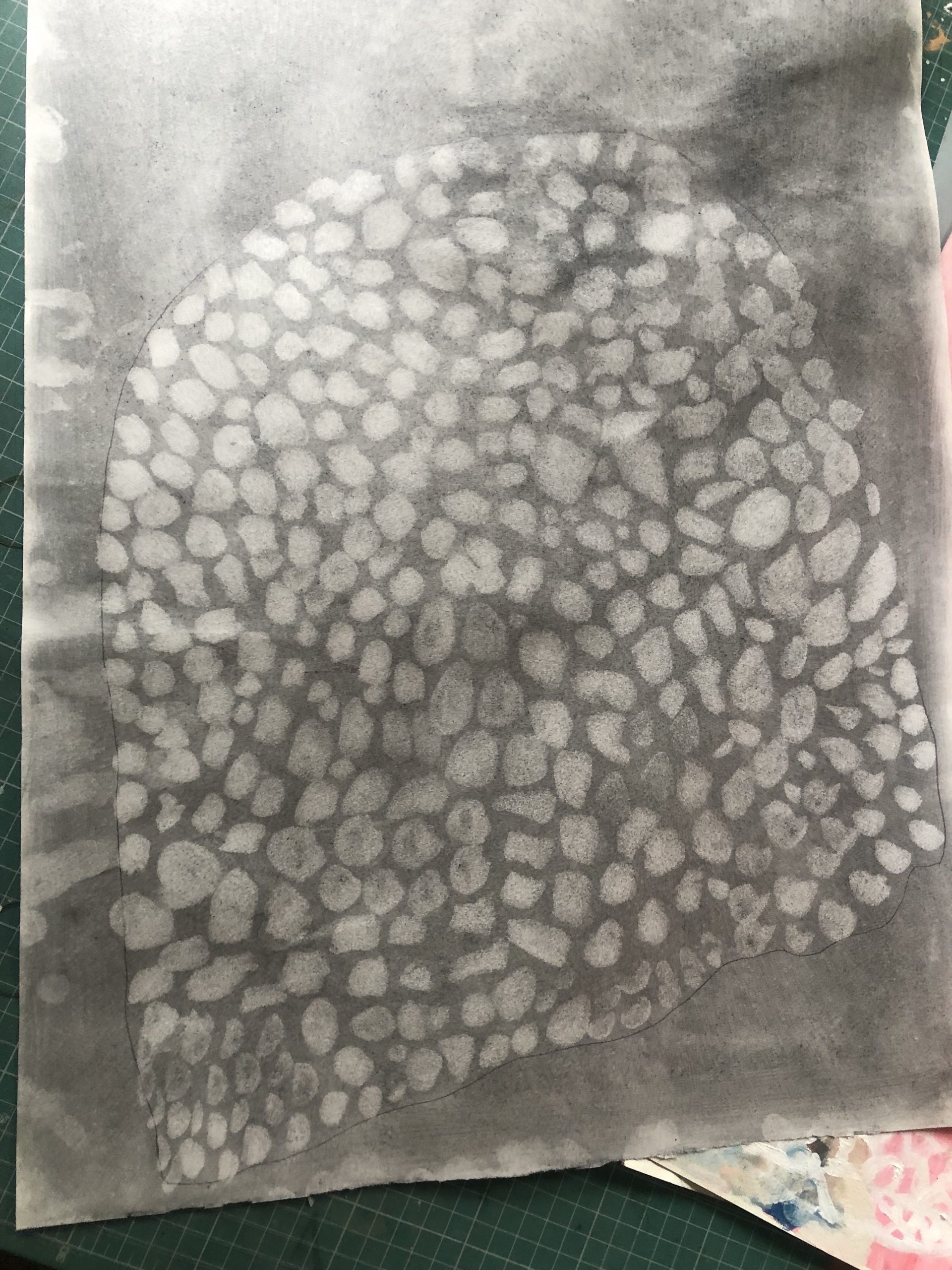
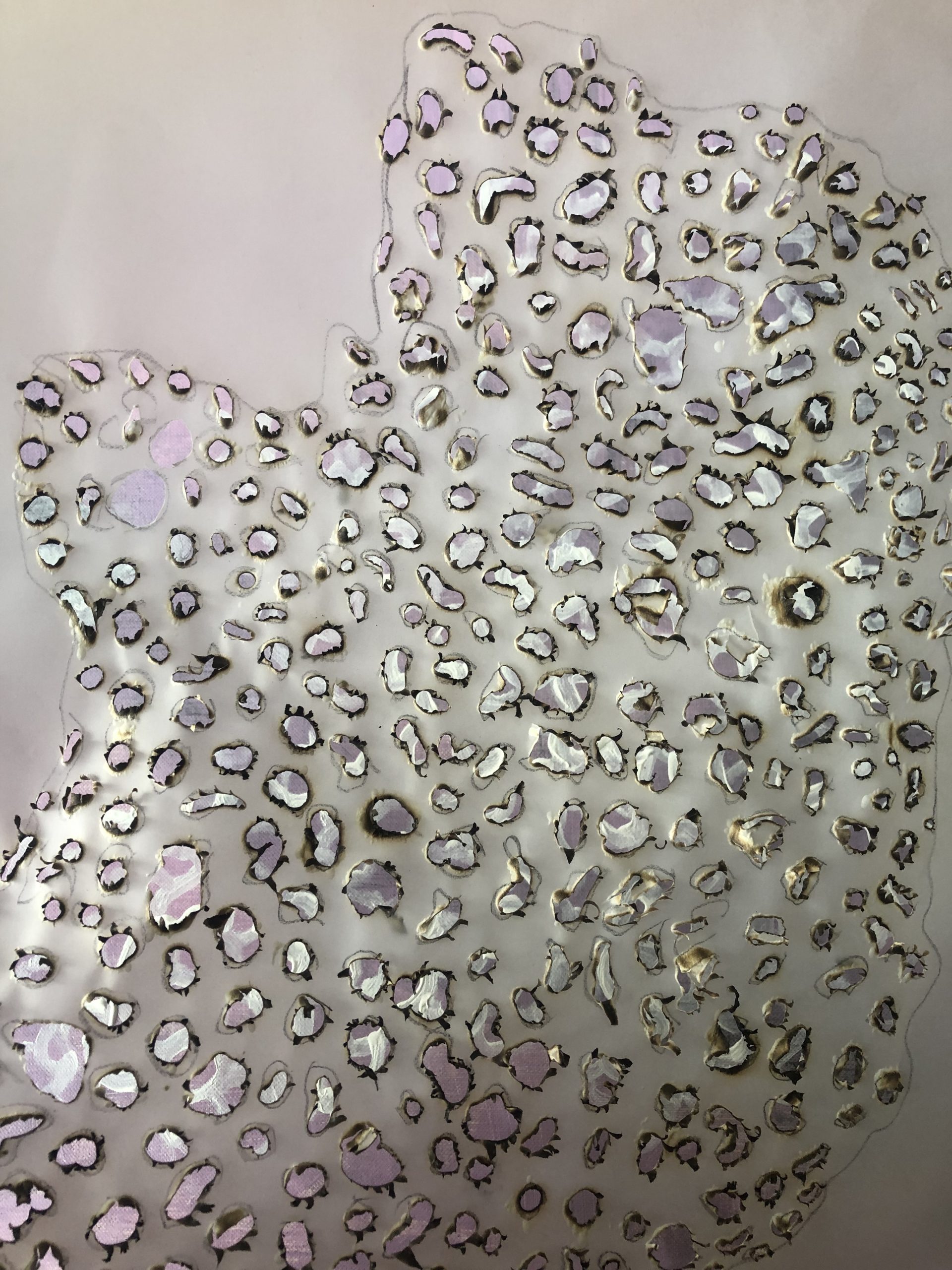
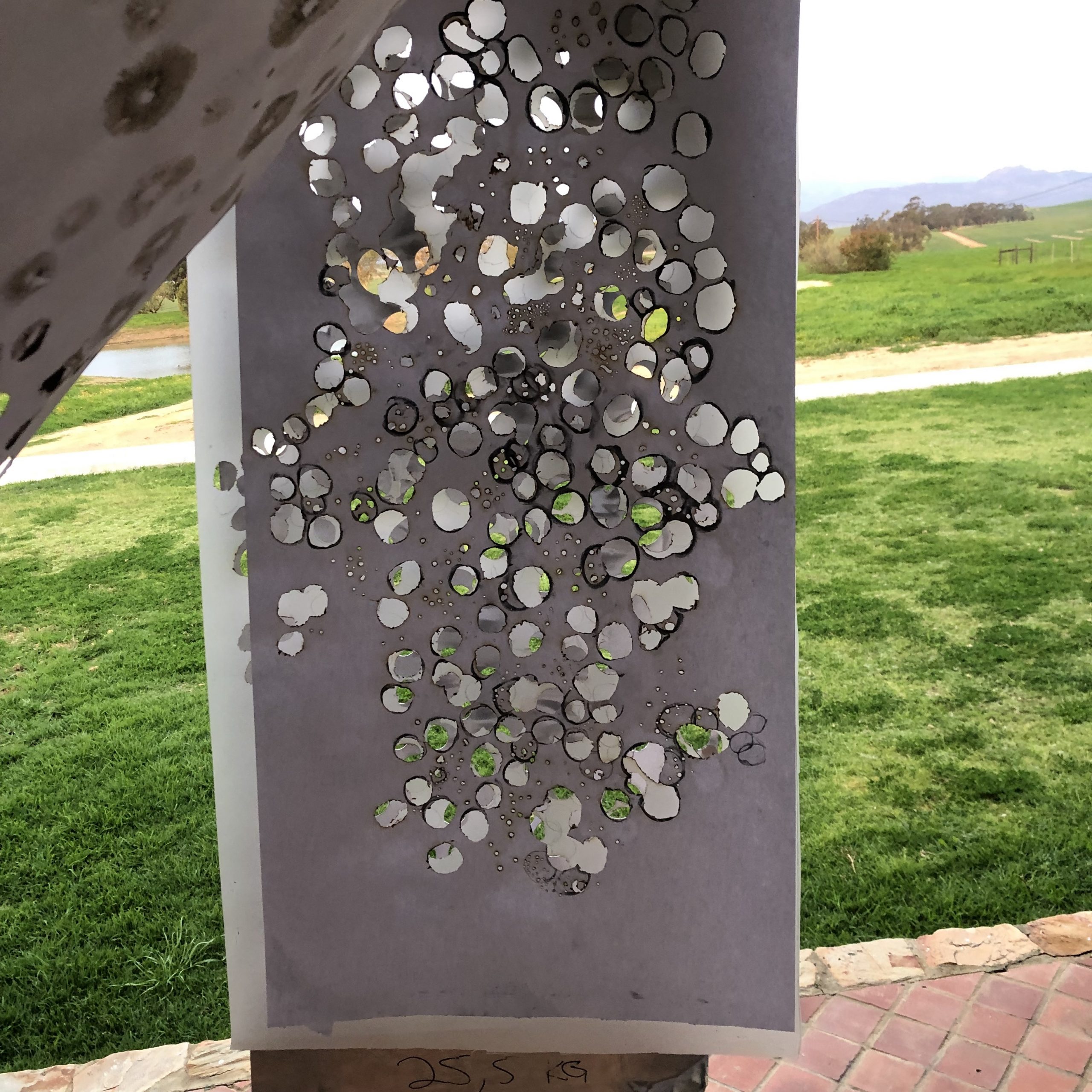
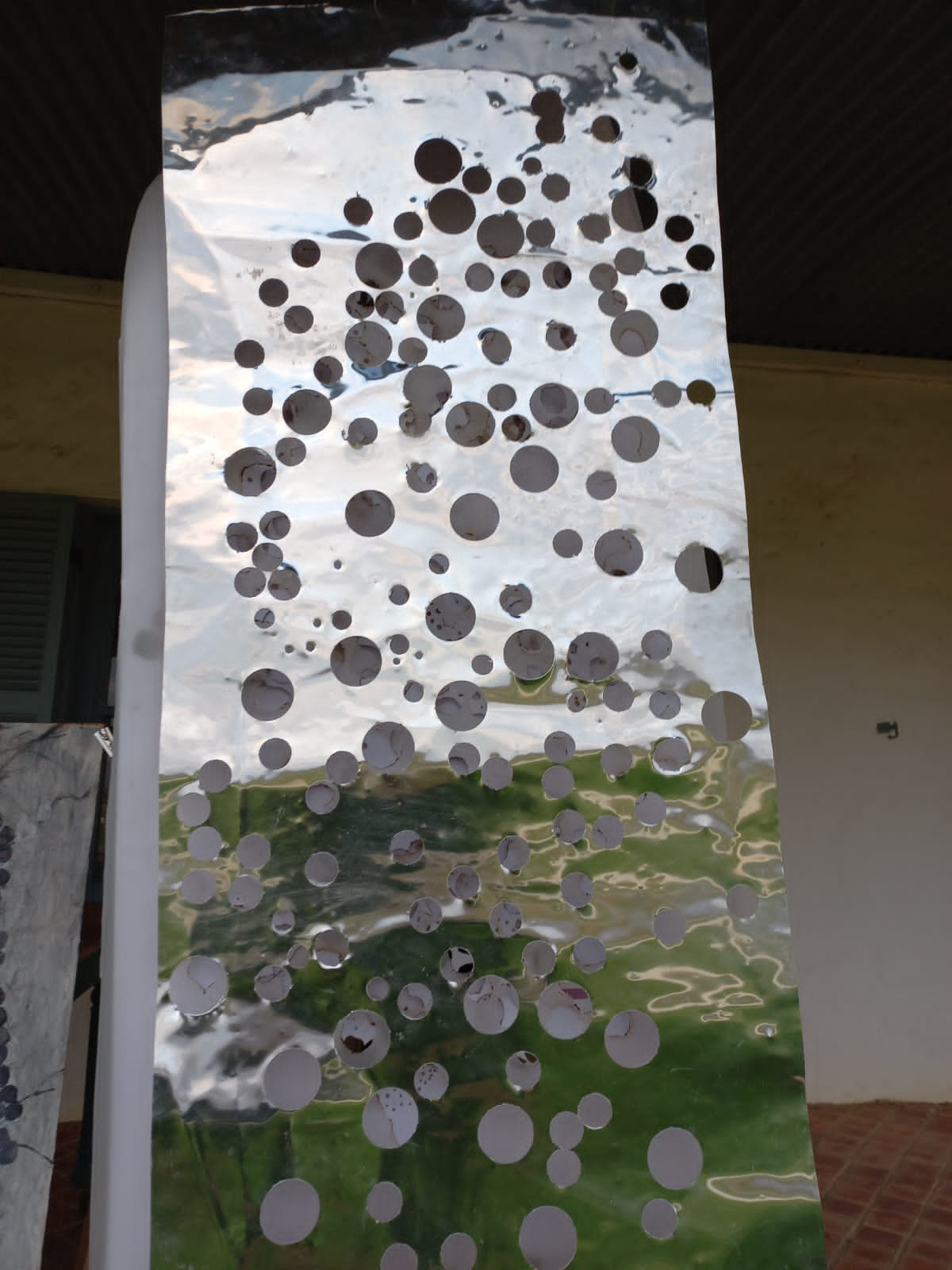
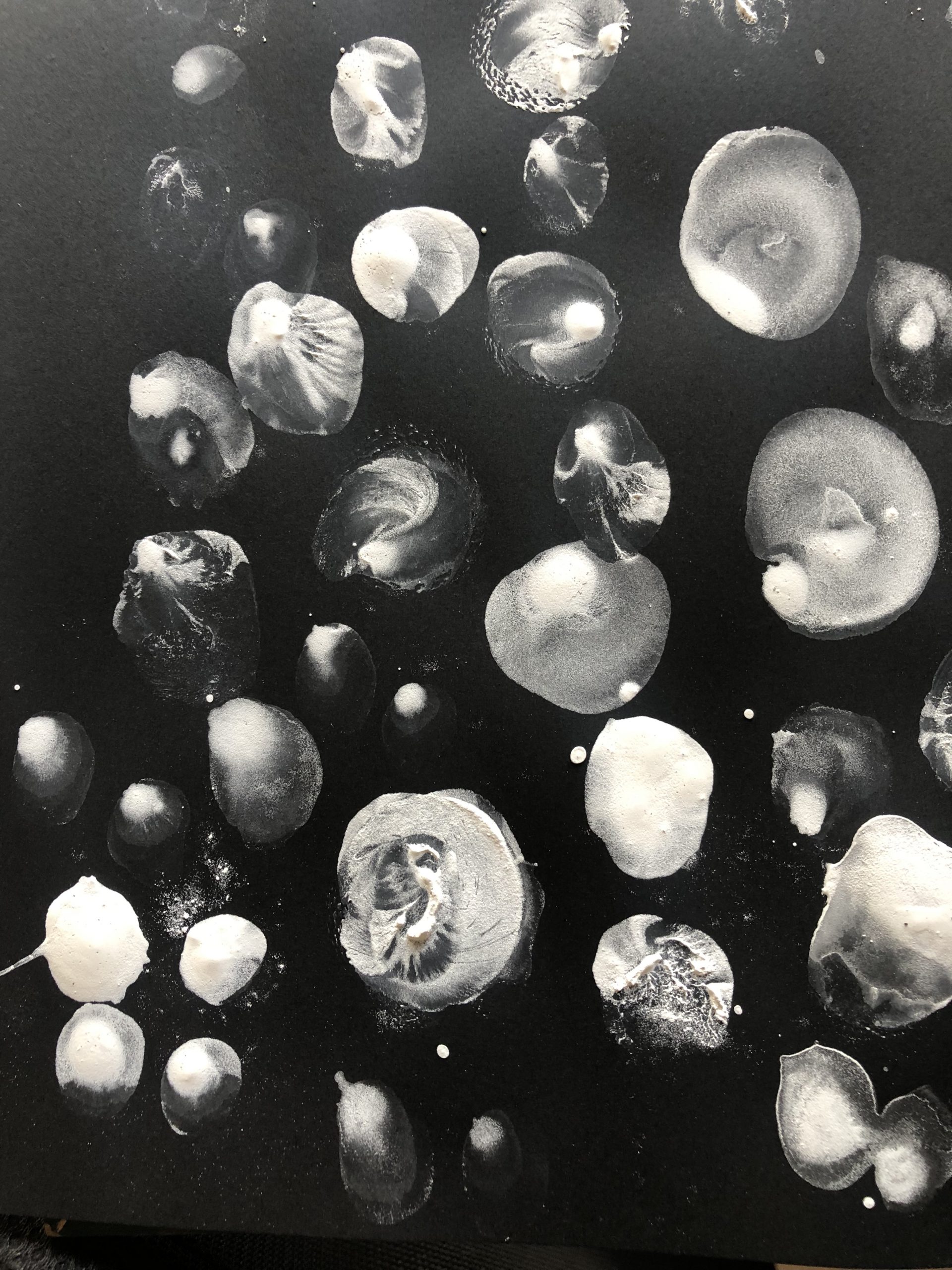
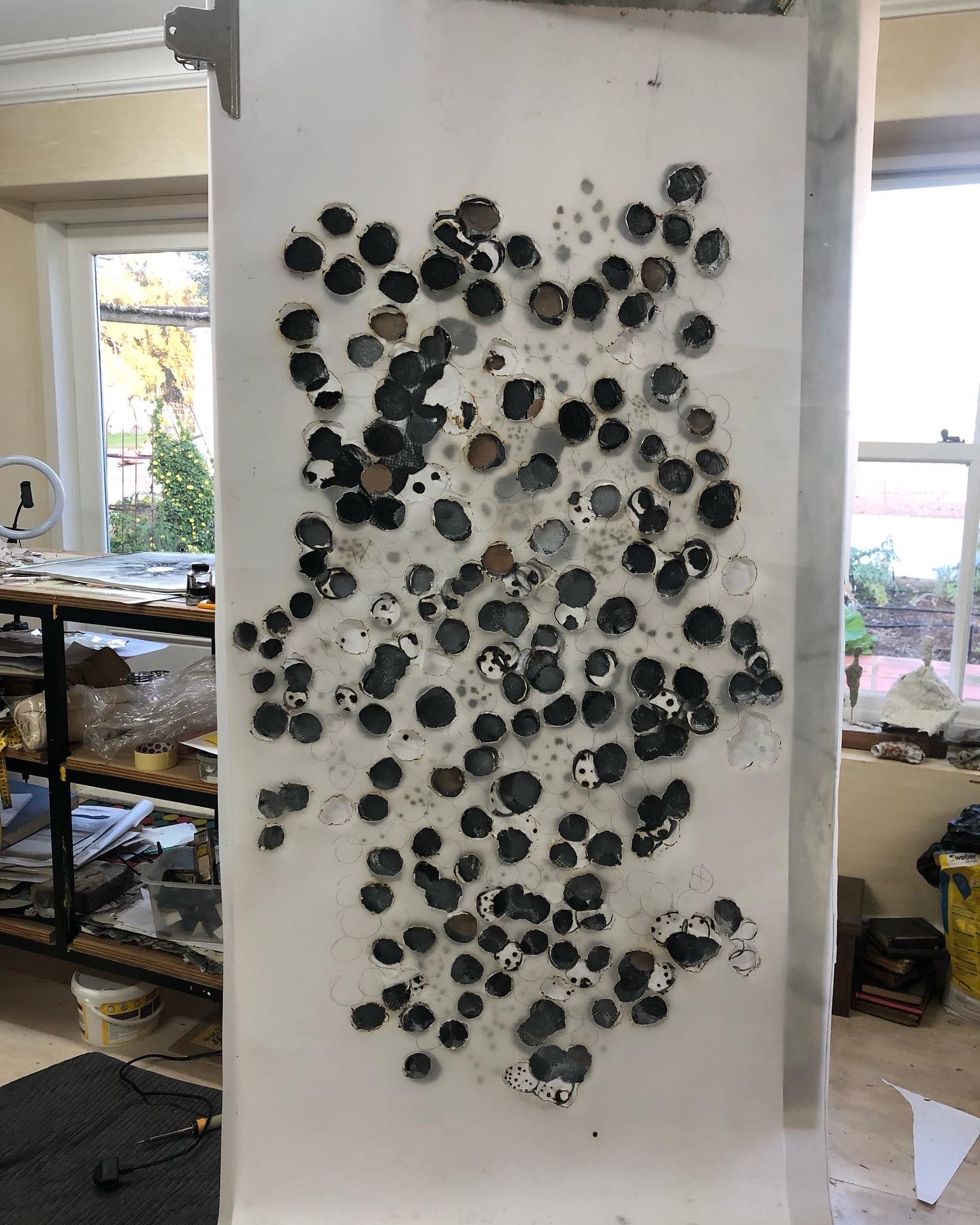
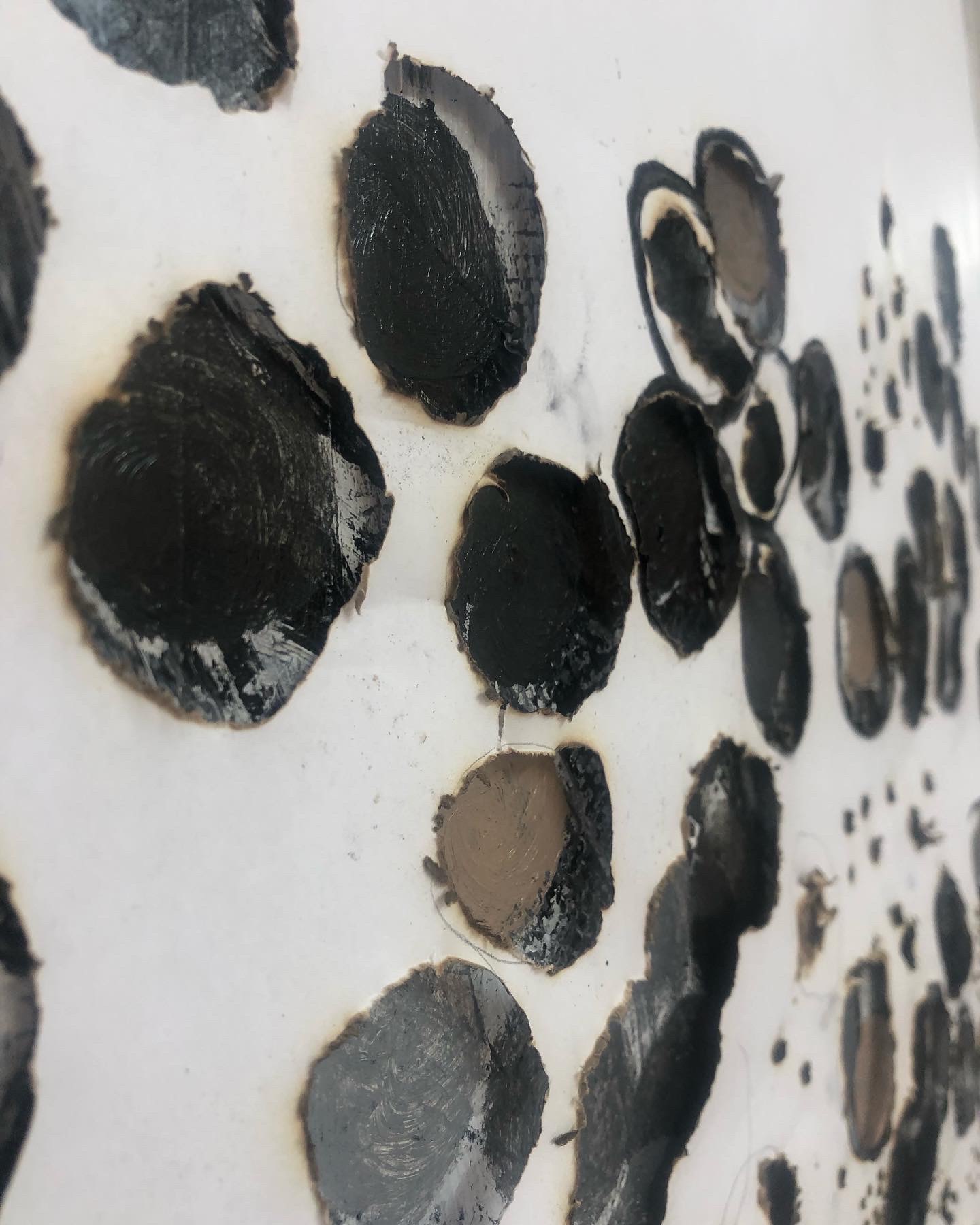
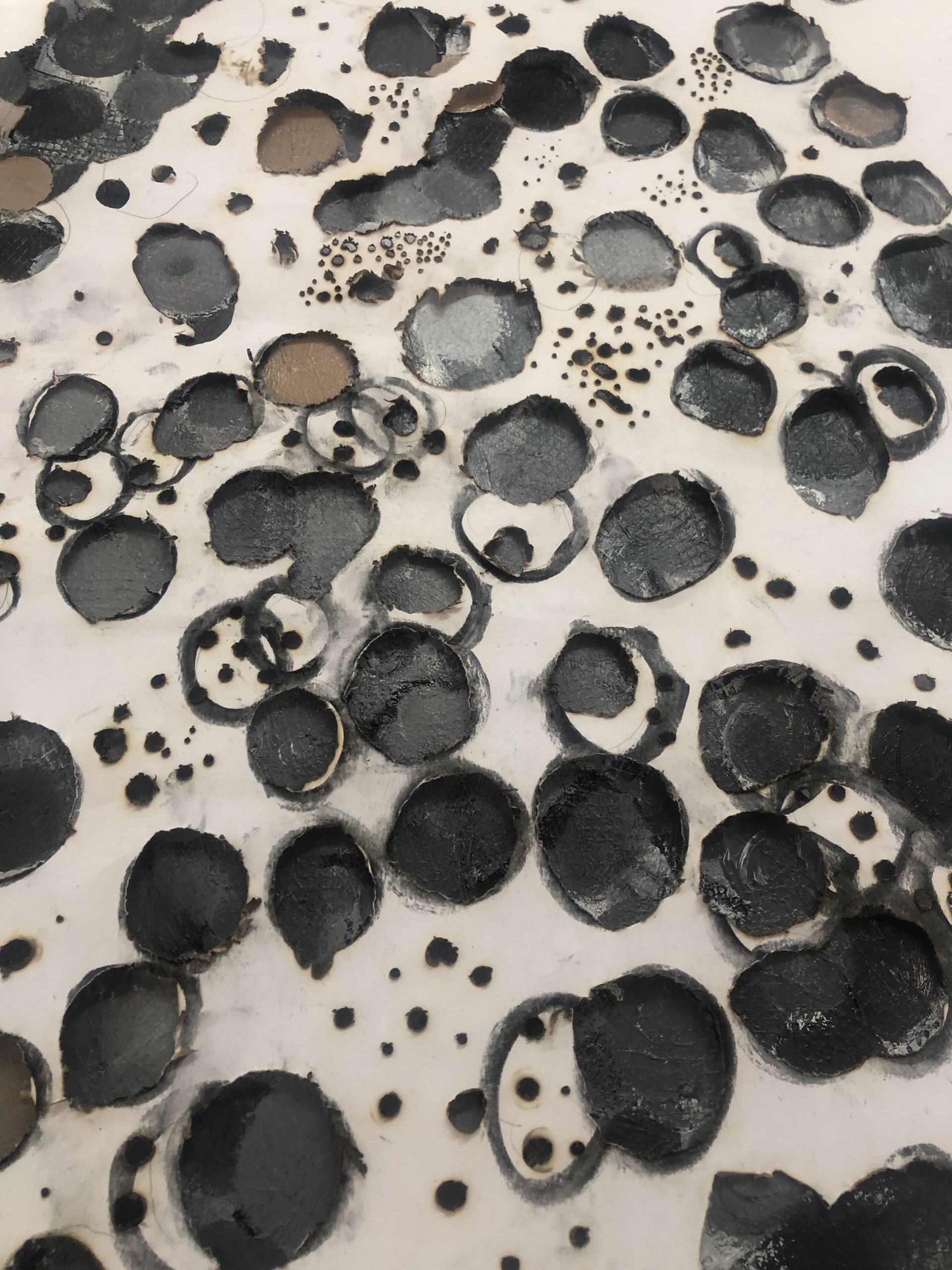
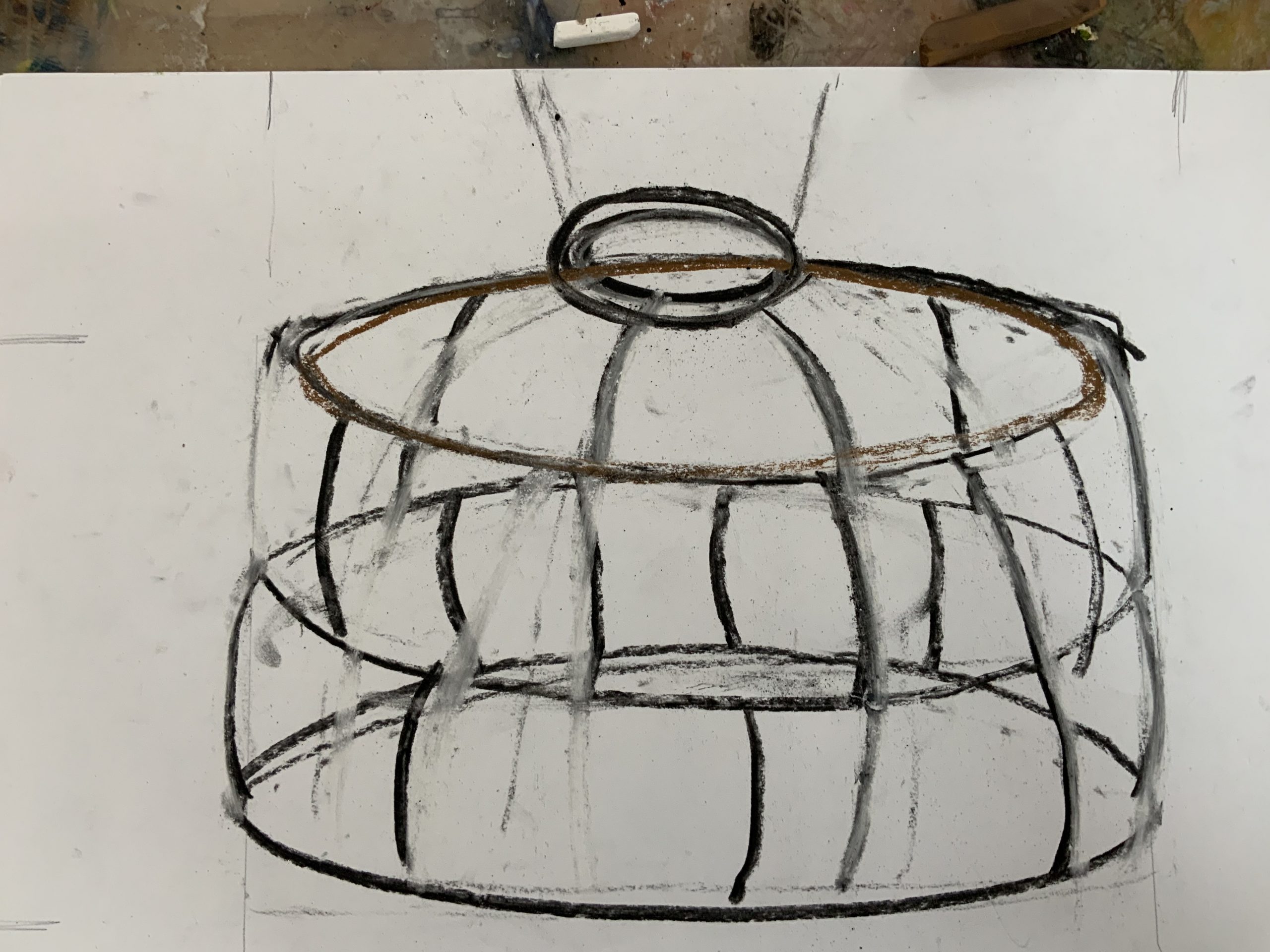
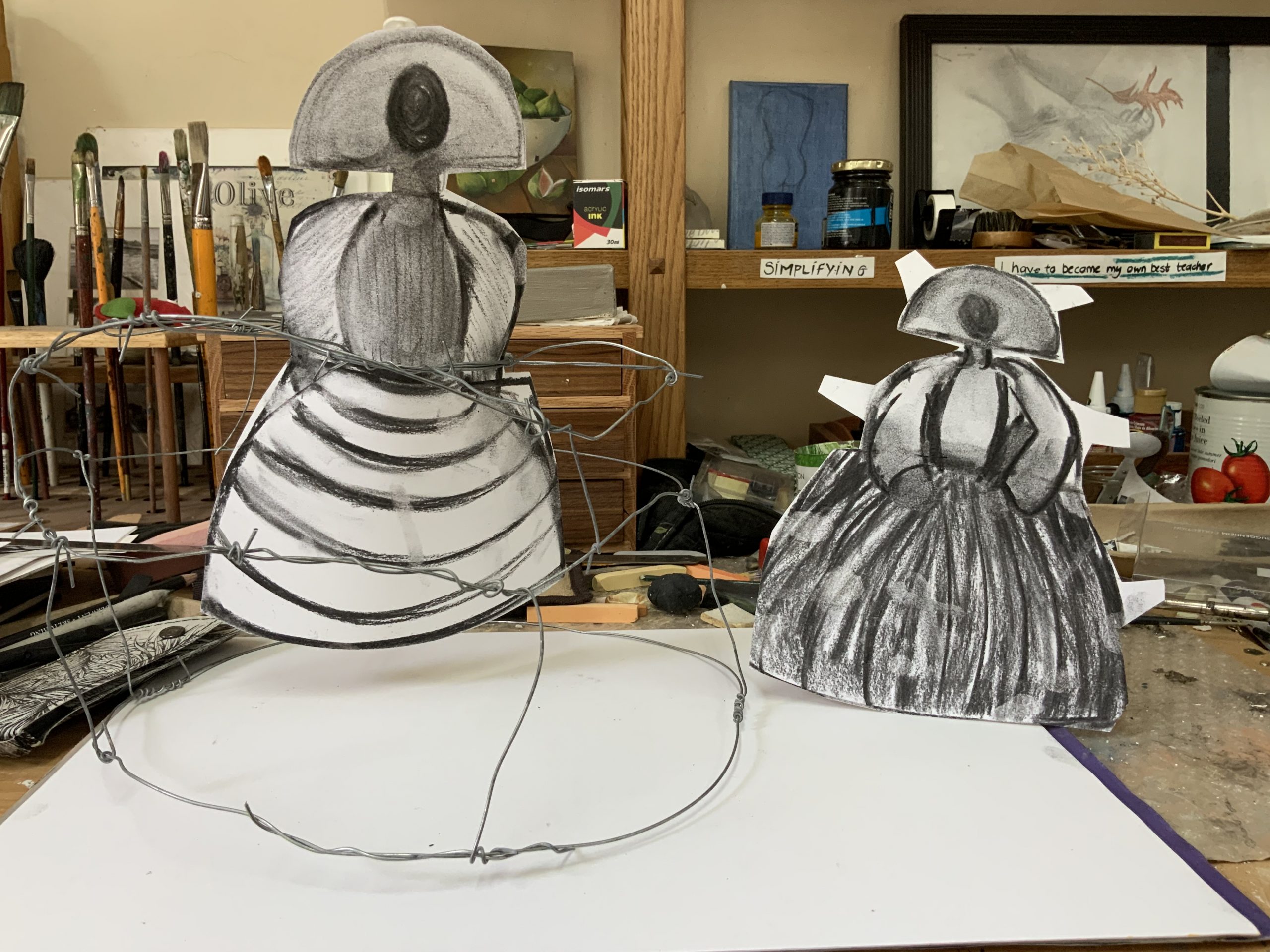
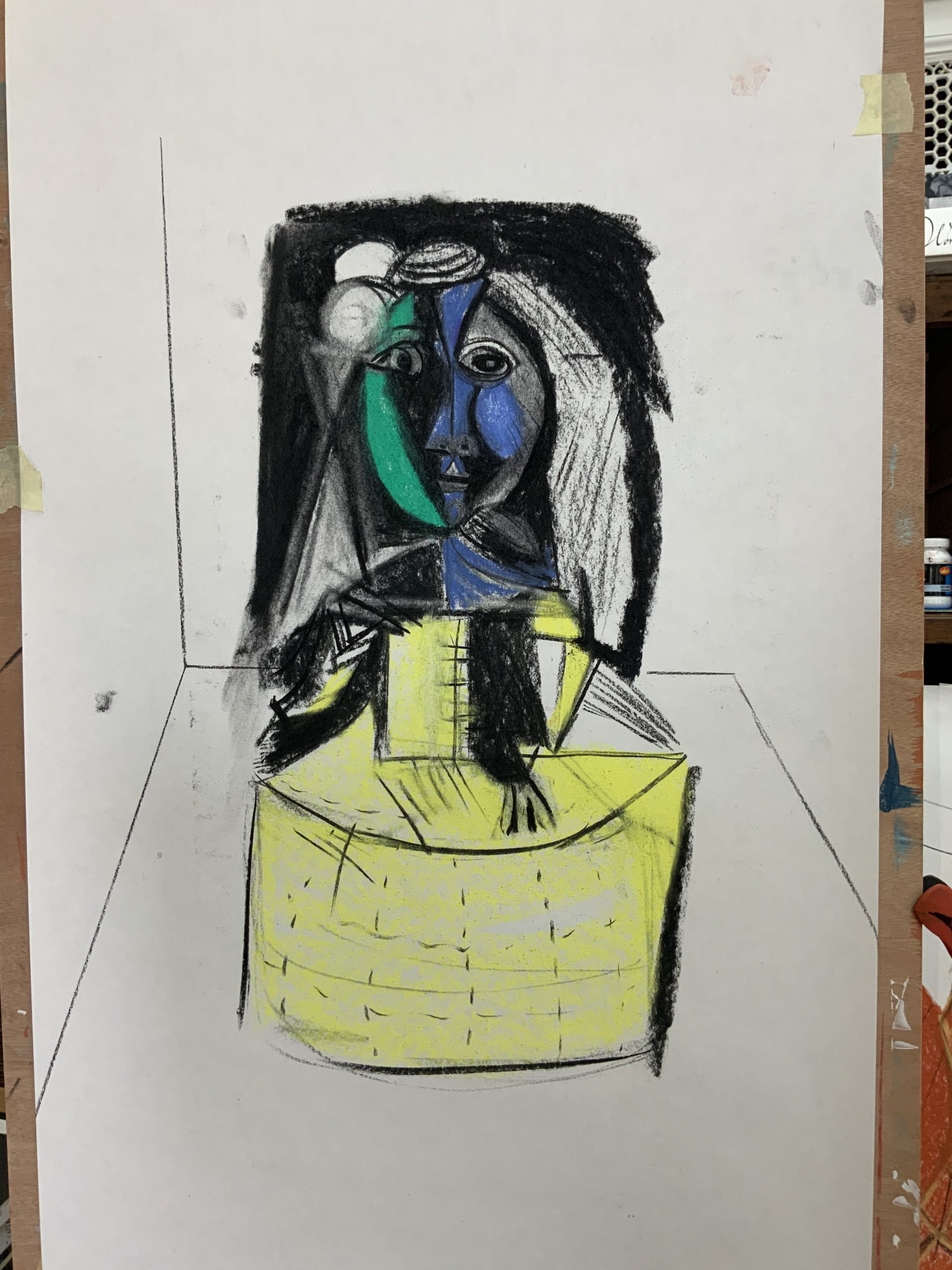
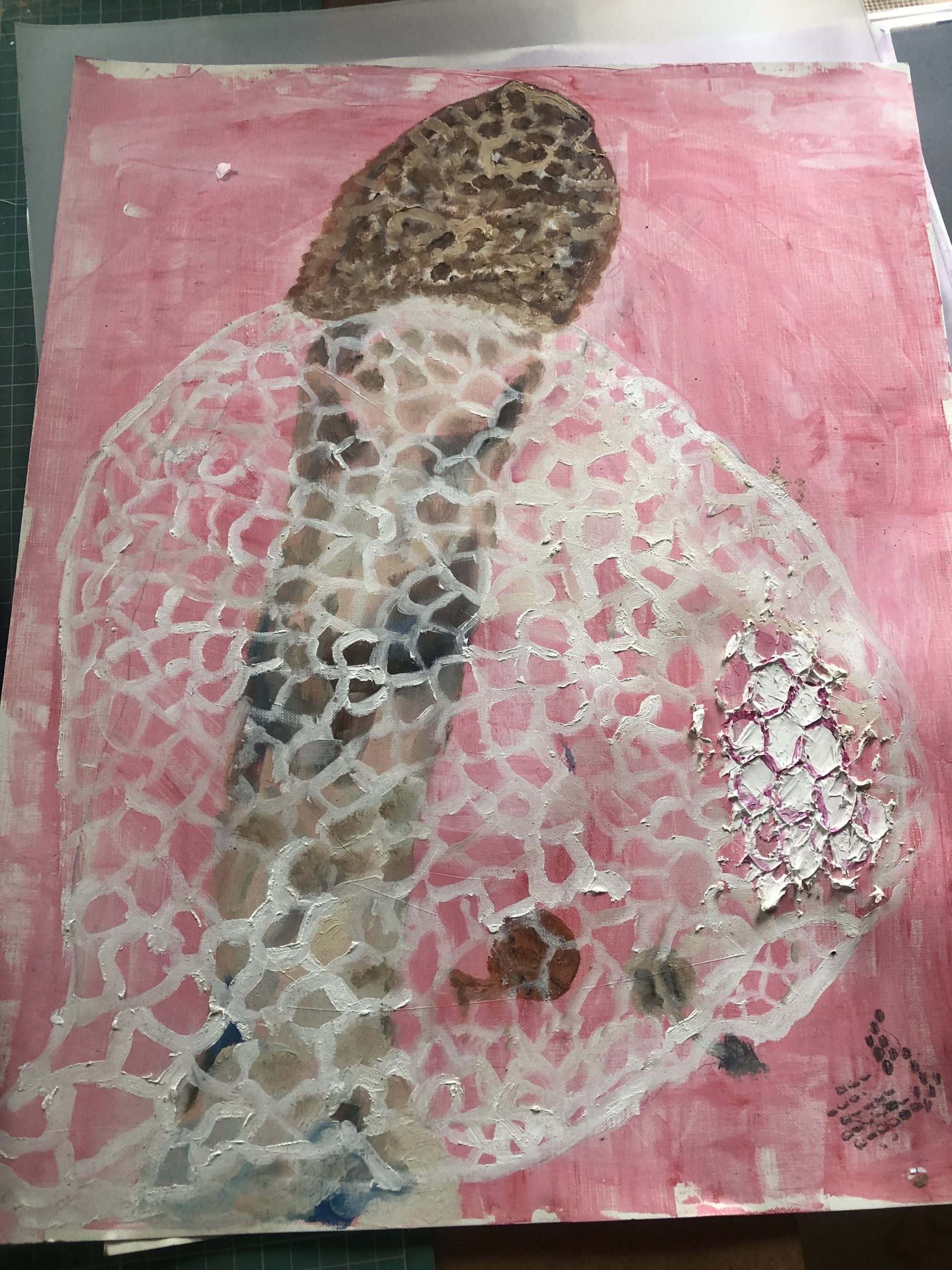
The material list is as follows:
- newsprint paper
- charcoal
- pastels
- acrylic paint
- oil paint
- wire
- velour
- paper board
- chipboard
- canvas paper
- tools to make holes
- putty eraser
I went back to the work of Cy Twombly, Treatise on the Veil, 1968 and envisioned an installation of these layers.
Reading more about Radhika Khimji. https://experimenter.in/artists/61-radhika-khimji/overview/